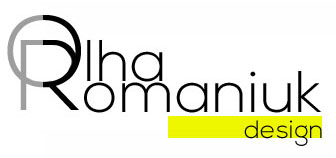Elevating the standards of service apartment living, Enviro Tec infuses boutique design and environmental sensibility into Fraser Residence in Jakarta, writes Olha Romaniuk.
Located on the edge of the central business district in Thamrin, Jakarta, Fraser Residence looks set to redefine the expectations of a service apartment building. To capitalise on its strategic location, frame panoramic views of the city and feature contextualised design elements that would differentiate this project from typical high-rise residences, the Fraser Residence Menteng Jakarta presents fifteen storeys of apartment units where attention to site sensitivity and context are of equal importance to luxury and exclusivity.
As it is often the case with extended stay properties, the biggest defining features of this particular building type are the amenities that complement the lifestyles of the guests. This means that the design considerations of service apartments demand an incorporation of facilities that can be found in hotels to facilitate the typically transient lifestyles of the residents. This also means that designers and architects are inclined to create more neutral and impersonal environments that skew towards hotel rather than residential living.
Thus, when faced with the challenge of designing a service apartment with a little more soul and character, the design team at Enviro Tec took a slightly different approach that resulted in a well thought out design, sensitive to the needs of the building occupants in more ways than just through a straightforward inclusion of convenient facilities.
“We amalgamated architecture, interior, landscape and lighting design into a single form. It was important to join all these factors of design together into one element which could be seen from the apartment planning to the outdoor landscaped areas to the streets and back to Jakarta as a city,” says Design Director Ming Zhou.
Taking advantage of the location, the design team conceptualised the new Fraser Residence as a building with framed and unobstructed views of the city. The box frames’ weave pattern that characterises the building’s exterior plays with the notion of opacity and transparency, allowing the facade to appear more solid from afar and more translucent in a closer proximity.
Along with fashioning the building’s facade as a series of frames, the team incorporated perforated sun screens, angled at an optimum position to block out the sun yet allowing the view out onto the city for the building’s residents. “The building screens also conceal outdoor air conditioning units which are designed to be placed on outdoor ledges on every side of the facade, on every level,” says Zhou, “On the exterior, all the MEP equipment is concealed and designed together as part of the architectural facade. This is one feature that really distinguishes Fraser Residence from other serviced apartments where the MEP equipment is often an after thought and is visible on the buildings’ exterior, like a sore thumb.”
To address the dearth of common green spaces dedicated to relaxation and repose – an issue that often plagues high-rise residential living – the Enviro Tec team made a conscious decision to provide such opportunities within Fraser Residence, integrating landscape and waterscape solutions, including a timber planter box screen framing the perimeter of the site and roof gardens for two penthouses, into the overall design.
“Since the site is surrounded by local residential neighbourhoods, we had to consider how to fence up the site without being too intrusive. We managed to convince the client to put a good part of the budget into a landscape timber screen wall where planter boxes stack up to create a staggered pattern with hanging plants and other types of plants reminiscent of the building crown. This is a friendly intervention in the neighbourhood but is also a way to beautify the surroundings,” explains Zhou.
The environmentally friendly design of Fraser Residence is evident in the integration of a grey-water recycling and rainwater collection system and the selection of locally sourced materials. From timber merbau decking to local marble, stone and terrazzo flooring, the design team incorporated sustainable solutions into the project’s integral design strategy, even though the initial design brief did not call for any specific environmentally friendly features.
“We were always advocating for a sustainable building system. As fuel prices rise, it is important for the client to understand that designing a ‘green’ building is not just about applying an eco-friendly material but rather designing the entire building system from MEP to architectural details to be well integrated so as to have an efficiently-run building,” concludes Zhou.
